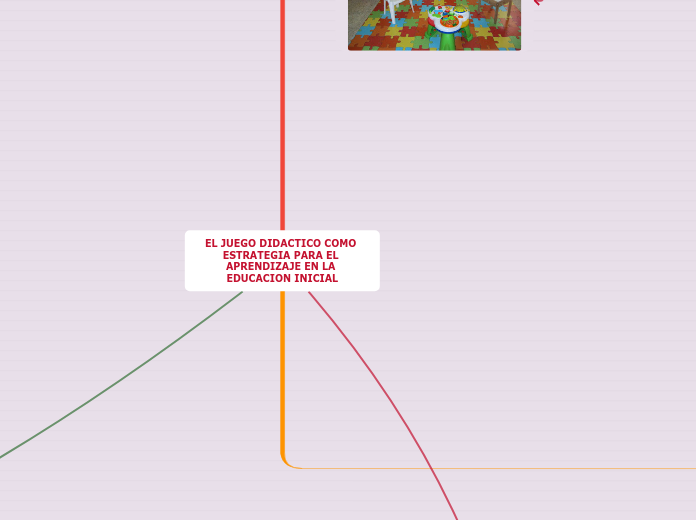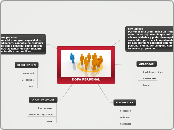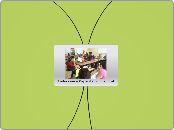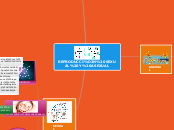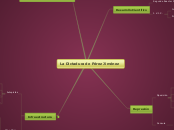UNIVERSIDAD DE PANAMÁ
FACULTAD DE CIENCIAS DE LA EDUCACIÓN
FORMACION PEDAGOGICA
Licenciatura en Educación Preescolar
MATERIA: DIDACTICA DEL JUEGO COMO ESTRATEGIA PARA EL APRENDIZAJE EN EDUCACION INICIAL
ASIGNACION #1: MAPA MENTAL
ESTUDIANTE: BERENICE BEDOYA 8-856-2268
Año Lectivo 2022
PROFESORA: AIDA ZERNA
LOS 4 MOMENTOS DEL JUEGO
The ending of a story is essential. We all know that if the ending is weak, what happened before loses its importance. So make it unpredictable, but fair. A resolved ending answers all the questions and ties up any loose threads from the plot.
Orden
ordenar
No debe ser una obligación para el grupo, sino un pedido de colaboración de la maestra para
hacerlo; a medida que el grupo tenga mejor internalizado el hábito, lo realizará a partir de necesidades propias.
No es un momento de
juego, por lo tanto no consideramos válida la propuesta de presentar la opción de ordenar como una actividad lúdica.
en este momento se lleva a cabo otra actividad; la de limpiar, volver a colocar las cosas en su lugar y poner en práctica los hábitos de higiene aprendidos.
Evaluacion
evaluar
(parte final) En esta instancia, la maestra se reune con los niños para hablar de las actividades realizadas, de lo que lograron, de las cuestiones que se pueden mejorar, de lo bien que trabajaron. Es importante que de énfasis a las metas logradas, para que el grupo se sienta seguro y confiado.
Para que esta evaluación tenga total validez es imprescindible que la maestra haya
observado el juego de cada estudiante.
Desarrollo
This is the closure section of the story.
See examples of possible outcomes below:
- all problems have been solved
- it's clear how each one of your characters ends up
- your main character is transformed by the challenge
desarrollar
Try answering these questions to come up with a closure:
- Have all the problems been solved?
- Is there a clear picture of what happens with each character in the story?
- Has the challenge transformed your main character?
- How do the characters feel in the end?
En esta etapa los niños realizarán las acciones previamente planificadas y la docente observarará las tareas de los grupos. La intervención de la docente se hará en los casos en donde se necesita ayuda.
El desarrollo es el tiempo en el que está permitido y resulta placentero accionar libremente con
los otros y con los materiales. Es cuando se crean nuevas situaciones lúdicas donde se desarrolla
plenamente el yo individual en un proceso de socialización. Es el tiempo de aprender jugando.
Planificacion
This is the moment when the main character surpasses the last obstacle and finally faces their greatest challenge.
The climax usually follows one of these patterns:
- realization
- resolution
- choice
Type in your answer.
planificar
(parte inicial) En esta instancia, la participación de la docente debe ser mínima. Podrá ser la guía y orientadora, aunque no deberá decir a los niños cómo actuar y qué grupo elegir. Los niños podrán crear un plan de actividades, elegir los materiales de cada sector de trabajo, los grupos que conformarán en cada tarea y las metas a las que desean llegar.
En términos generales, se puede decir que la planificación por parte de los niños en edad preescolar
contribuye a:
Acrecentar la seguridad en sí mismo y la cooperación.
Lograr una mejor afirmación del yo.
Desarrollar el lenguaje.
Lograr una más clara organización de la realidad.
Se Cacterizan en:
TIPOS DE JUEGO SEGUN LA EDAD DEL NIÑO
The middle of the story is where you add layers of complications that will lead to the end. Reveal more about the character's journey. Did their personality go through changes? How did they overcome the challenges? And as you build up the story’s central conflict, make it more personal to that character. Also, from the middle act, you have to lead into the final act.
4 A 5 Años
En esta edad, el niño interactúa por completo y de forma mas organizada con sus compañeros, asumiendo roles y teniendo un objetivo en común. A esto se le denomina "JUEGO COOPERATIVO".
3 A 4 Años
There wouldn't be any tension and excitement in your story if there weren't any obstacles in your character's way.
En esta etapa, el niño empieza a interactuar con otros compañeros, pero cada uno le da un uso o rol diferente al juego, no hay objetivos específicos para cada uno. A esto se le llama "JUEGO ASOCIATIVO"
2 A 3 Años
Your character(s) need(s) motivation in order to solve the challenge(s).
A esta etapa de juego se le podría llamar "EL JUEGO PARALELO", ya que al niño le gusta jugar estando con mas personas, sin embargo, no interactúan completamente con ellos.
Why does your character need to confront this challenge? What does he/she expect to accomplish by solving it?
See a few examples:
- will marry in 3 days
- can fix the mistakes of the past
0 A 2 Años
Each story has a main character and that character usually needs to solve a problem or challenge. The character's challenge is the one that creates tension throughout the story.
En esta etapa de juego el niño se centra en si mismo, en su propia exploración se podría llamar el "JUEGO SOLITARIO". Avientan pelotas y suenan maracas sin interactuar necesariamente con mas personas.
In most stories, there are 3 challenges. The number 3 is a mystical number symbolizing completeness. Try to come up with interesting challenges with which your character needs to struggle.
See a few examples below:
- turns into a werewolf at night
- is sent back in time
video sobre el desarrollo del juego trabajo como guia didactica
EL JUEGO DIDACTICO COMO ESTRATEGIA PARA EL APRENDIZAJE EN LA EDUCACION INICIAL
IMPORTANCIA DEL JUEGO
El juego forma parte de la escuela y del hogar, y es cuando a través del juego, los niños imitan la realidad, representando lo que han vivido o desean vivir a través de sus emociones.
c) Frustraciones.
b) Tristezas.
a) Alegrías.
El juego permite al niño desarrollar su imaginación, explorar su medio ambiente, desarrollar su creatividad y tener una mejor comunicación entre los padres y adultos.
En el juego se puede hacer uso de materiales como: cajas de cartón, bloques de madera o plástico y tapaderas, las cuales se deben adaptar de acuerdo al crecimiento y formación de capacidades de cada niño.
Desarrollo sensorial y mental
Creatividad e imaginación
Afectivas
Fisicas
Los niños invierten gran parte de su tiempo en jugar, el tipo de juego debe ser adaptado a la edad y preferencias del infante, más que una diversion, es una actividad de motivación para cada niño.
EL JUEGO COMO ESTRATEGIA DE APRENDIZAJE
In the beginning of the story (or the exposition), you will need to introduce the setting and characters. You might also want to introduce the main conflict. This part of the story is important because it gives the reader necessary background information and maybe even a first insight into a character’s personality.
comprende
The setting (time & place) of a story can change throughout the plot.
espontanea
The weather is an important element in your story because it can highly influence the ambiance and the mood of the characters.
libre
The time of the story can also change. It can describe the event of a single day or can include an entire year's plot. Anyway, don't forget to mention it.
actividad placentera
Your story can take place wherever your imagination will take you to.
For example: in an elevator, in an enchanted forest, etc. Don't forget to give details of the environment each time the setting changes, otherwise, the story can be confusing. Also, mention the seasons as each of them has unique weather and events.
concepto
Characters are essential to a good story. Usually, the protagonist(s) is/are the most affected by the plot. Introduce a character by focusing on their actions, interests, and occupation, as the physical appearance doesn't make a difference in most cases.
El juego es una actividad inherente al ser humano. Es considerado como parte de una experiencia humana y están presentes en todas las culturas.
Type in the name of your character.
Capacidades linguistica
Add other qualities/attributes of the character.
Capacidades afectivas
What is your character's main goal?
fight Evilfind lovedefeat his/her enemyrule the worldmake friendstime travelmake an awesome discoveryOther
Capacidades motoras
Which traits best describe the character's personality? Choose more if necessary:
introvertedloyalkindindependentquick-thinkingadventuresomeidealisticsweet-naturedcalmrisk-takercreativewittystrictfussyweirdclumsyharshaggressivecarelessclingingcowardlycrueldeceitfulimpulsiveOther
Capacidades intelectuales
Choose the type of your chacter:
Protagonist (main character)Antagonist (main character's opponent)Flat (stereotypical character)Round (his/ her personality develops throughout the story)Static (doesn't evolve as a person throughout the story)Dynamic (dramatical change in personality)Confidant (the main character trusts him/ her)Foil (contrasting character who enhances the personality of another character)Other
